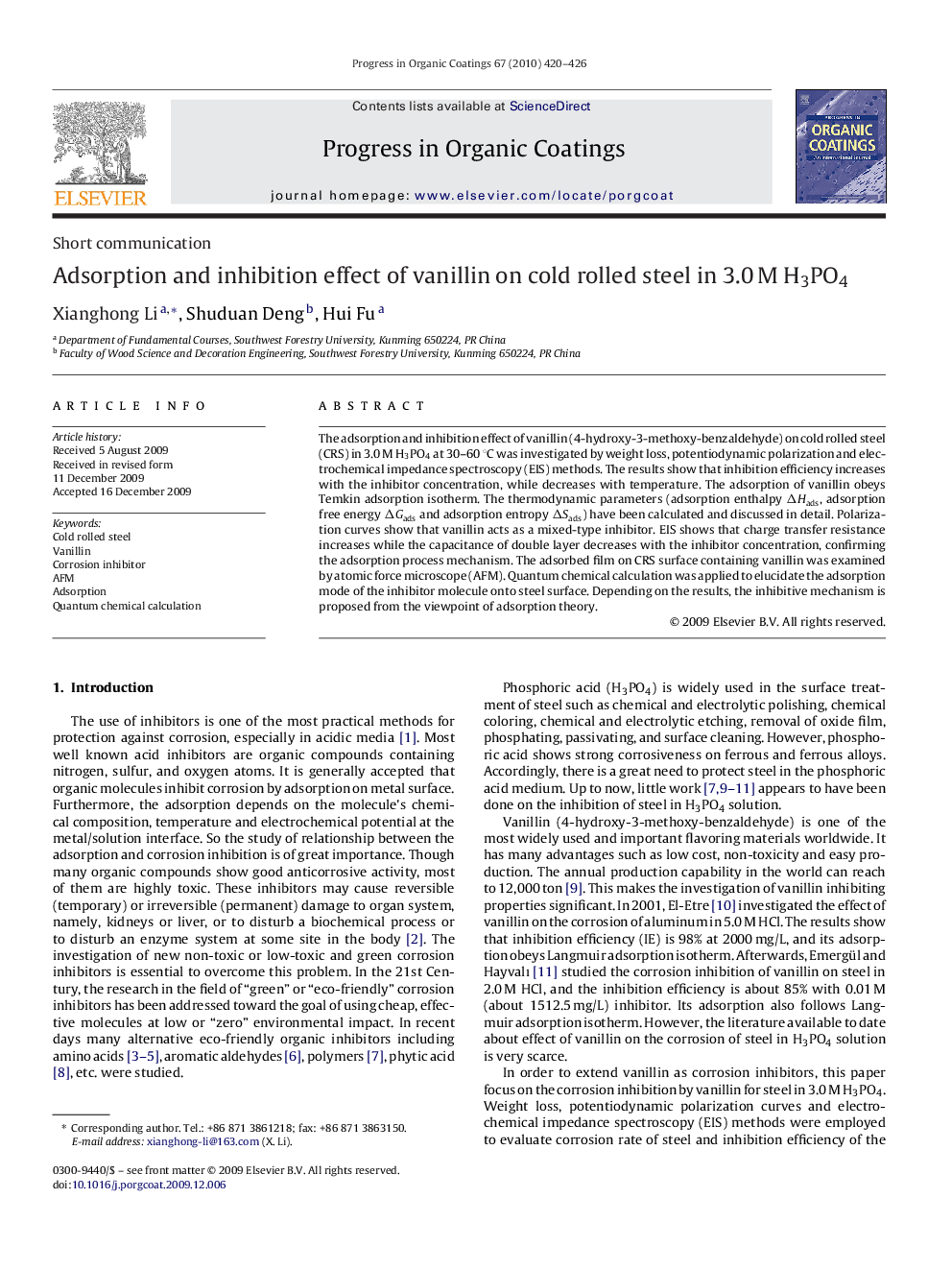| Article ID | Journal | Published Year | Pages | File Type |
|---|---|---|---|---|
| 693666 | Progress in Organic Coatings | 2010 | 7 Pages |
The adsorption and inhibition effect of vanillin (4-hydroxy-3-methoxy-benzaldehyde) on cold rolled steel (CRS) in 3.0 M H3PO4 at 30–60 °C was investigated by weight loss, potentiodynamic polarization and electrochemical impedance spectroscopy (EIS) methods. The results show that inhibition efficiency increases with the inhibitor concentration, while decreases with temperature. The adsorption of vanillin obeys Temkin adsorption isotherm. The thermodynamic parameters (adsorption enthalpy ΔHads, adsorption free energy ΔGads and adsorption entropy ΔSads) have been calculated and discussed in detail. Polarization curves show that vanillin acts as a mixed-type inhibitor. EIS shows that charge transfer resistance increases while the capacitance of double layer decreases with the inhibitor concentration, confirming the adsorption process mechanism. The adsorbed film on CRS surface containing vanillin was examined by atomic force microscope (AFM). Quantum chemical calculation was applied to elucidate the adsorption mode of the inhibitor molecule onto steel surface. Depending on the results, the inhibitive mechanism is proposed from the viewpoint of adsorption theory.
